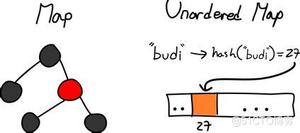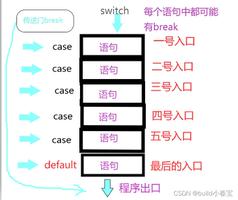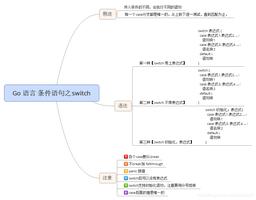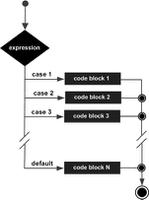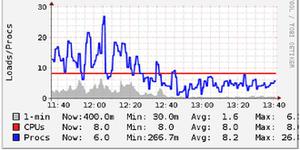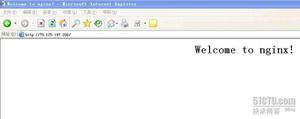深入解析Swift中switch语句对case的数据类型匹配的支持
Swift可以对switch中不同数据类型的值作匹配判断:
var things = Any[]()
things.append(0)
things.append(0.0)
things.append(42)
things.append(3.14159)
things.append("hello")
things.append((3.0, 5.0))
things.append(Movie(name:"Ghostbusters", director:"Ivan Reitman"))
for thing in things {
switch thing {
case 0 as Int:
println("zero as an Int")
case 0 as Double:
println("zero as a Double")
case let someInt as Int:
println("an integer value of (someInt)")
case let someDouble as Double where someDouble > 0:
println("a positive double value of (someDouble)")
case is Double:
println("some other double value that I don't want to print")
case let someString as String:
println("a string value of "(someString)"")
case let (x, y) as (Double, Double):
println("an (x, y) point at (x), (y)")
case let movie as Movie:
println("a movie called '(movie.name)', dir. (movie.director)")
default:
println("something else")
}
}
// zero as an Int
// zero as a Double
// an integer value of 42
// a positive double value of 3.14159
// a string value of"hello"
// an (x, y) point at 3.0, 5.0
// a movie called 'Ghostbusters', dir. Ivan Reitman
这里面会根据thing的值进行匹配,到对应的case当中。
今天突然想到一个问题,让我觉得有必要总结一下switch语句。我们知道swift中的switch,远比C语言只能比较整数强大得多,但问题来了,哪些类型可以放到switch中比较呢,对象可以比较么?
官方文档对switch的用法给出了这样的解释:
Cases can match many different patterns, including interval matches, tuples, and casts to a specific type.
也就是说除了最常用的比较整数、字符串等等之外,switch还可以用来匹配范围、元组,转化成某个特定类型等等。但文档里这个including用的实在是无语,因为它没有指明所有可以放在switch中比较的类型,文章开头提出的问题依然没有答案。
我们不妨动手试一下,用switch匹配对象:
class A {
}
var o = A()
var o1 = A()
var o2 = A()
switch o {
case o1:
print("it is o1")
case o2:
print("it is o2")
default:
print("not o1 or o2")
}
果然,编译器报错了:“Expression pattern of type 'A' cannot match values of type 'A'”。至少我们目前还不明白“expression pattern”是什么,怎么类型A就不能匹配类型A了。
我们做一下改动,在case语句后面加上let:
switch o {
case let o1:
print("it is o1")
case let o2:
print("it is o2")
default:
print("not o1 or o2")
}
OK,编译运行,结果是:it is o1。这是因为case let不是匹配值,而是值绑定,也就是把o的值赋给临时变量o1,这在o是可选类型时很有用,类似于if let那样的隐式解析可选类型。没有打出it is o2是因为swift中的switch,只匹配第一个相符的case,然后就结束了,即使不写break也不会跳到后面的case。
扯远了,回到话题上来,既然添加let不行,我们得想别的办法。这时候不妨考虑一下switch语句是怎么实现的。据我个人猜测,估计类似于用了好多个if判断有没有匹配的case,那既然如此,我们给类型A重载一下==运算符试试:
class A {}
func == (lhs: A, rhs: A) -> Bool { return true }
var o = A(); var o1 = A() ;var o2 = A()
switch o {
case o1:
print("it is o1")
case o2:
print("it is o2")
default:
print("not o1 or o2")
}
很显然,又失败了。如果这就能搞定问题,那这篇文章也太水了。报错信息和之前一样。可问题是我们已经重载了==运算符,为什么A类型还是不能饿匹配A类型呢,难道switch不用判断两个变量是否相等么。
switch作为一个多条件匹配的语句,自然是要判断变量是否相等的,不过它不是通过==运算符判断,而是通过~=运算符。再来看一段官方文档的解释:
An expression pattern represents the value of an expression. Expression patterns appear only in switch statement case labels.
以及这句话:
The expression represented by the expression pattern is compared with the value of an input expression using the Swift standard library ~= operator.
第一句解释了之前的报错,所谓的“express pattern”是指表达式的值,这个概念只在switch的case标签中有。所以之前的报错信息是说:“o1这个表达式的值(还是o1)与传入的参数o都是类型A的,但它们无法匹配”。至于为什么不能匹配,答案在第二句话中,因为o1和o的匹配是通过调用标准库中的~=运算符完成的。
所以,只要把重载==换成重载~=就可以了。改动一个字符,别的都不用改,然后程序就可以运行了。Swift默认在~=运算符中调用==运算符,这也就是为什么我们感觉不到匹配整数类型需要什么额外处理。但对于自定义类型来说,不重载~=运算符,就算你重载了==也是没用的。
除此以外,还有一种解决方法,那就是让A类型实现Equatable协议。这样就不需要重载~=运算符了。答案就在Swift的module的最后几行:
@warn_unused_result
public func ~=<T : Equatable>(a: T, b: T) -> Bool
Swift已经为所有实现了Equatable协议的类重载了~=运算符。虽然实现Equatable协议只要求重载==运算符,但如果你不显式的注明遵守了Equatable协议,swift是无法知道的。因此,如果你重载了==运算符,就顺手标注一下实现了Equatable协议吧,这样还有很多好处,比如SequenceType的split方法等。
最后总结一句:
能放在switch语句中的类型必须重载~=运算符,或者实现Equatable协议。
以上是 深入解析Swift中switch语句对case的数据类型匹配的支持 的全部内容, 来源链接: utcz.com/z/342878.html

